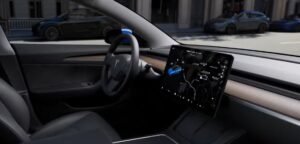
Tesla recalls almost all vehicles sold in the United States

Tesla is issuing a Recall Information | Tesla Support for over 2 million vehicles across its models to address a faulty system designed to verify driver attention while utilizing Autopilot. Documents posted by U.S. safety regulators say the company will send out a software update to fix the problems.
Following a two-year investigation by the National Highway Traffic Safety Administration into a sequence of accidents occurring during the utilization of Tesla’s partially automated driving system, Autopilot, some of which resulted in fatalities, the recall has been initiated.
According to documents released by U.S. safety regulators on Wednesday, the update will amplify warnings and alerts for drivers and may also restrict the regions where standard versions of Autopilot are functional.
The recall covers models Y, S, 3 and X produced between Oct. 5, 2012, and Dec. 7 of this year. The update was to be sent to certain affected vehicles on Tuesday, with the rest getting it later.

The investigation by the agency highlighted Autopilot’s insufficient method of ensuring driver attentiveness, leading to the potential for “foreseeable misuse of the system.” The introduced controls and alerts aim to “further encourage the driver to adhere to their continuous driving responsibility,,” as per the documents.
However, safety experts noted that although the recall is a positive measure, it continues to place responsibility on the driver and does not address the fundamental issue with Tesla’s automated systems in detecting and avoiding obstacles along their route.
Autopilot comprises Autosteer and Traffic Aware Cruise Control, where Autosteer is designed for use on specific freeways and not on city streets, unless operated with a more advanced feature called Autosteer on City Streets.
The upcoming software update will restrict the usage of Autosteer. As per the recall documents, “If the driver attempts to engage Autosteer when conditions are not met for engagement, the feature will alert the driver it is unavailable through visual and audible alerts, and Autosteer will not engage.”
Depending on the Tesla’s hardware, the additional controls involve “increasing prominence” of visual alerts, simplifying the activation and deactivation process of Autosteer, and implementing further checks to ensure Autosteer is used appropriately on controlled access roads and near traffic control devices. The documents state that a driver could face suspension from using Autosteer if they repeatedly fail “to demonstrate continuous and sustained driving responsibility.”
According to recall documents, agency investigators met with Tesla starting in October to explain “tentative conclusions” about the fixing the monitoring system. Tesla agreed to the recall on Dec. 5 in an effort to resolve the investigation.
In its statement Wednesday, NHTSA said the investigation remains open “as we monitor the efficacy of Tesla’s remedies and continue to work with the automaker to ensure the highest level of safety.”

Autopilot has the capability to steer, accelerate, and brake within its lane autonomously, yet it functions as a driver-assist system and is not equipped to operate the vehicle entirely, despite its name. External assessments have revealed that the monitoring system is easily deceived to the extent that drivers have been discovered driving under the influence or even seated in the back seat.
In its defect report filed with the safety agency, Tesla said Autopilot’s controls “may not be sufficient to prevent driver misuse.” In May, Transportation Secretary Pete Buttigieg, whose department includes NHTSA, said Tesla shouldn’t be calling the system Autopilot because it can’t drive itself.
Earlier this year, Tesla initiated a voluntary recall of 362,758 vehicles featuring Full Self-Driving Beta (FSD) software.
The NHTSA stated in the recall that the FSD “elevates the potential for a crash” because of multiple purported glitches in the software, which Tesla was preparing to address through a complimentary over-the-air update.







